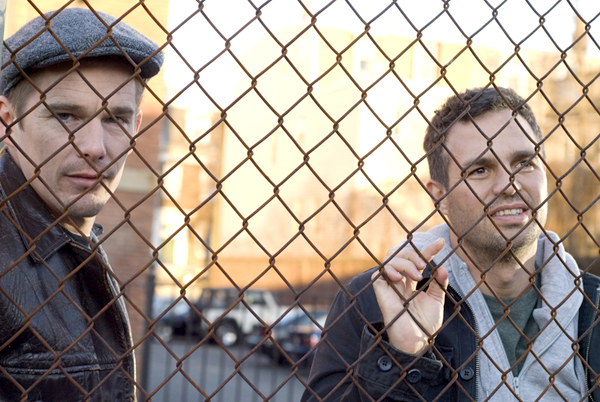|
Reviews of Recent Independent, Foreign, & Documentary Films in Theaters and DVD/Home Video

WHAT DOESN’T KILL YOU
Although it’s familiar territory—underprivileged inner city kids turn to a life of crime and find themselves unable to detach from it in their later lives—this film’s director builds a visceral, painful immediacy by virtue of having actually lived through it all. For what it might lack in originality, What Doesn’t Kill You, based on writer-director-actor Brian Goodman’s arduous life story, is gripping for its exhaustive attention to detail, a bold commitment to the world of impoverished South Boston, and a willingness—by Goodman and stars Mark Ruffalo and Ethan Hawke—to explore the most embarrassing and painful aspects of these troubled lives. But what do you do when your personal story has been repeatedly portrayed on screen for decades, especially by greats such as Sidney Lumet, Abel Ferrara, and Martin Scorsese? In this case, Goodman remains focused not on the grit of the subject matter, but on the agonizing psychological state of his hero, telling a story that relates much more closely to everyday lives than what’s offered by the usual crime sagas. Brian is a tough Southie thug who works as a bagman for a crime boss, keeping his family’s bills paid but remaining both physically and emotionally unavailable. Deftly portrayed by a dynamic Ruffalo, Brian is in trouble with the law, battles a difficult drug and alcohol addiction, and is often absent from the lives of his sons. His wife, played by a talented Amanda Peet, desperately clings to a belief that he’ll someday grow up. Only after a stint in prison (these days a distorted manhood ritual for the urban poor), Brian begins to believe he can as well, making WDKY less a crime drama and more a story about a man learning what it means to mature In a society that lacks a consistent model for manhood, it’s easy to identify with Brian’s dilemma. He has a loving, supportive wife, and two upstanding sons, yet he sees his illicit habits as a responsibility; a personal cross to bear in order to provide for his family. Where an adequate model for adult responsibility fails to exist, the criminal life serves as a crude replacement. The first robbery, first fight, and first jail sentence are often the only way young men prove their own worth. Unfortunately, for all of the cultural significance this story represents, there is not a single person of color in the film. If Goodman’s intention is to remind audiences that the “urban poor” includes white people too, then he is successful. But for all its realism, this film quite unrealistically leaves out several important demographics. In a startling
moment, Brian’s son tells him to “stop drinking, and don’t leave us.”
The boy, looking for a model in his father, can only identify what a man
shouldn’t be. As a boy, Brian was initiated into the crime world
prematurely, too early becoming an ostensible “man.” It’s only by the
end of the film, with his hair graying, his pockets empty, that Brian
begins to understand the responsibilities of adulthood. See this film
not for gritty shootouts, tough guy Hollywood posturing, or a cool
true-crime story. See how the absence of adequate role models and
traditional adulthood rituals are shaping contemporary society.
Michael Lee
|

